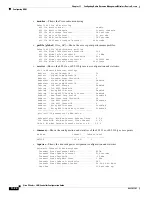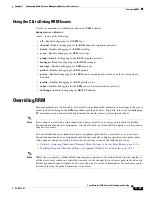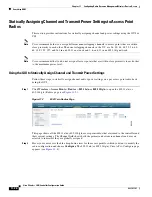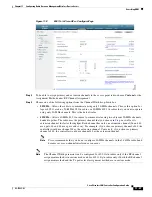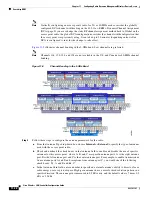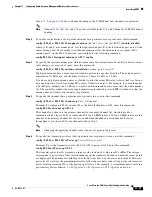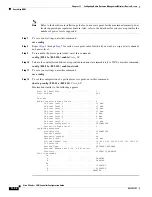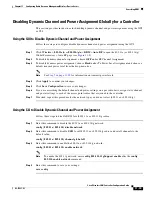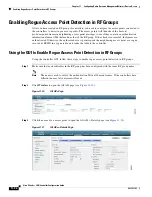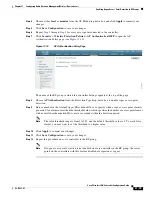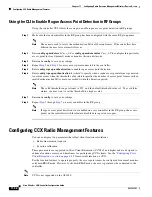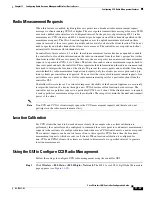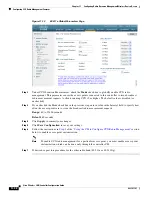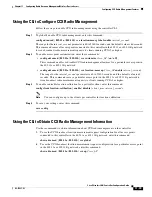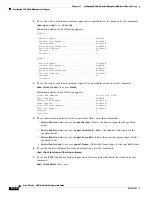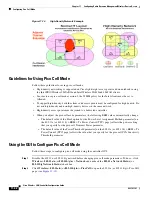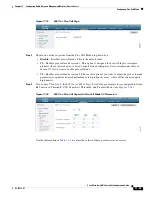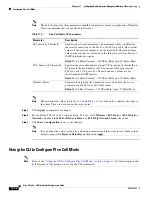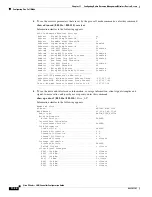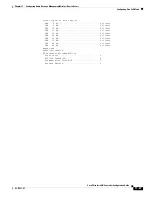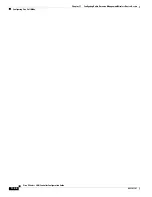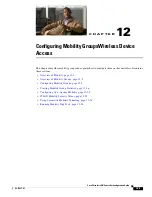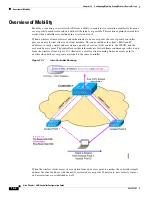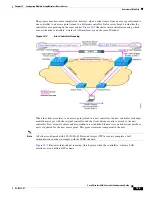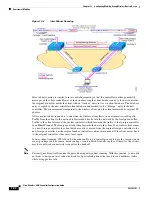
11-37
Cisco Wireless LAN Controller Configuration Guide
OL-17037-01
Chapter 11 Configuring Radio Resource ManagementWireless Device Access
Configuring CCX Radio Management Features
Radio Measurement Requests
When this feature is enabled, lightweight access points issue broadcast radio measurement request
messages to clients running CCXv2 or higher. The access points transmit these messages for every SSID
over each enabled radio interface at a configured interval. In the process of performing 802.11 radio
measurements, CCX clients send 802.11 broadcast probe requests on all the channels specified in the
measurement request. The Cisco Location Appliance uses the uplink measurements based on these
requests received at the access points to quickly and accurately calculate the client location. You do not
need to specify on which channels the clients are to measure. The controller, access point, and client
automatically determine which channels to use.
In controller software release 4.1 or later, the radio measurement feature has been expanded to enable
the controller to also obtain information on the radio environment from the client’s perspective (rather
than from just that of the access point). In this case, the access points issue unicast radio measurement
requests to a particular CCXv4 or v5 client. The client then sends various measurement reports back to
the access point and onto the controller. These reports include information on the radio environment and
data used to interpret the location of the clients. To prevent the access points and controller from being
overwhelmed by radio measurement requests and reports, only two clients per access point and up to
twenty clients per controller are supported. You can view the status of radio measurement requests for a
particular access point or client as well as radio measurement reports for a particular client from the
controller CLI.
Controller software release 4.1 or later also improves the ability of the Location Appliance to accurately
interpret the location of a device through a new CCXv4 feature called location-based services. The
controller issues a path-loss request to a particular CCXv4 or v5 client. If the client chooses to respond,
it sends a path-loss measurement report to the controller. These reports contain the channel and transmit
power of the client.
Note
Non-CCX and CCXv1 clients simply ignore the CCX measurement requests and therefore do not
participate in the radio measurement activity.
Location Calibration
For CCX clients that need to be tracked more closely (for example, when a client calibration is
performed), the controller can be configured to command the access point to send unicast measurement
requests to these clients at a configured interval and whenever a CCX client roams to a new access point.
These unicast requests can be sent out more often to these specific CCX clients than the broadcast
measurement requests, which are sent to all clients. When location calibration is configured for
non-CCX and CCXv1 clients, the clients are forced to disassociate at a specified interval to generate
location measurements.
Using the GUI to Configure CCX Radio Management
Follow these steps to configure CCX radio management using the controller GUI.
Step 1
Click
Wireless
>
802.11a/n
or
802.11b/g/n
>
Network
. The 802.11a (or 802.11b/g) Global Parameters
page appears (see
).


